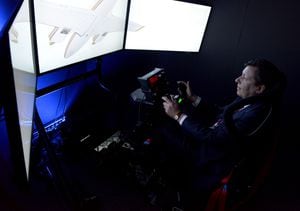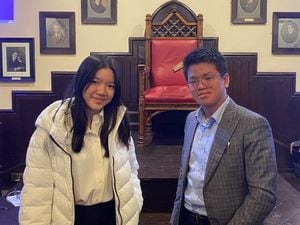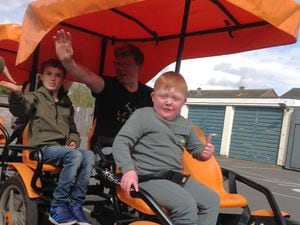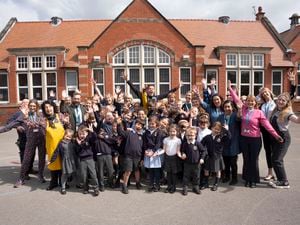The future of education is here – virtually
The room is in almost total darkness, illuminated only by the super-sized television screens covering the walls.

A giant three-dimensional image of the workings of a human heart beams from one of the screens, which is almost as big as the college lecturer explaining how it works. A few yards round the corner, the college principal tests out his skills as an airline pilot, while in the next room would-be police officers are challenged to see how they would react in a domestic violence situation.
This is not your typical college lecture theatre. There is no stage, no rows of desks. And definitely no blackboard and chalk.
We're being given a preview of Telford College's new virtual and augmented reality suite, which has just been kitted out at a cost of £750,000, supported by a £500,000 grant from Marches Local Enterprise Partnership.
And Jane McConnell, of Eon Reality which has supplied much of the equipment, says these teaching aids will soon be as commonplace on campus as overhead projectors.
"Telford is leading the way with this," she says. "There are only a few colleges across the country that are equipped to this standard."
Miss McConnell points her computer tablet at an A4 sheet of paper with a barcode printed on it, which is lying on the floor.
"That is part of a jet engine," she says, pointing at the images of dismantled parts which appear on the screen. "You might have a group of 10 or 20 students with an iPad or with their own phone, who will be able to use that."
She says that students of the future, instead of coming into lectures at fixed times, will be able to come in at times to suit themselves and complete assignments on their own devices.
While the flight and racing car simulators are unquestionably fantastic fun, college principal Graham Guest says there is a serious side to the technology.
He says the use of the 3D and virtual reality learning aids have been proven to increase a student's ability to process and retain information.
"The increase in learning is around 40 per cent," says Mr Guest.
“This is the future of learning.
"Education has to adapt to young people’s modern day lifestyles, which means we should no longer put all the emphasis on traditional classroom-style tuition."
The showpiece is the 3D 'cave', an area enclosed by a vast semi-circular screen which surrounds the user. It is being used to demonstrate a police training exercise where a student enters a house following reports of domestic violence.
The user can interact with the alleged victim and her husband, and take different courses of action to deal with the situation.
But it is not restricted to this kind of use. It can also be used for health and safety training, for example, and can transport students into a learning or working
environment anywhere in the world, recreating any climate or landscape.
Virtual reality headsets also allow students to see eerily life-like graphics which can reproduce almost any situation.
Head of Information Technology, Richard Miller, says over the course of the next year the new technology will begin to have a real impact on the way courses are delivered.
"At the moment these are our first steps, we have started to meet with our curriculum managers," he says.
"Next year we will be looking at how we can make use of this technology in our courses."
He says there may be opportunities where students, instead of sitting traditional tests, will be able to be assessed on practical tasks using the virtual reality technology.
Holly Davies, head of the 'seventh form' which specialises in vocational courses as an alternative to A-levels, says the applications for the technology are almost limitless.
"I think in future teaching will involve more computers, and be less about traditional lectures," she says.
"It allows students to have that immersive experience, it's about bringing things to life, not just looking at a picture in an exercise book."
Miss Davies says it is all about exciting students and giving them a thirst for knowledge.
"It's about people wanting to come in here and learn, exploring things and investigating for themselves."
She says the 3D graphics of the human heart or the eyeballs are examples of the use in biology, where people can dissect the different organs to see how they can work.
"I can also see it having huge potential for geography," she adds.
"I have just been to New York, and the virtual reality allows you to go anywhere in the world."





